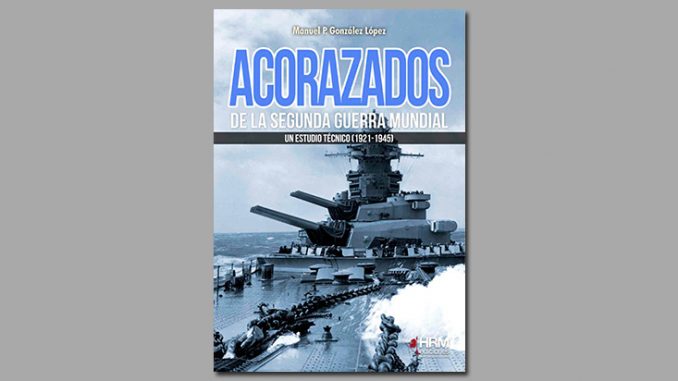
Battleships of World War II
A technical study (1921 – 1945)
Manuel P. González López
«Battleships of the Second World War. A technical study (1921 – 1945)» It is, without a doubt, a sublime work. As explained in the editorial's presentation of the same, the Washington Treaty of 1922 represented a brake on the arms race that began after the appearance of the Dreadnought in 1906. A race that not even the First World War had managed to stop.
Indeed, this treaty imposed a series of rules and conditions that ended up defining, necessarily, a type of battleship, the 35.000 tns, which would dominate the design tables of the interwar period.
Although most of the vessels in this study were completed outside the strict validity of the treaties, they severely conditioned technical and political choices. This has led its author, Manuel P. González López, to begin this rigorous study, precisely, with this treatise.
It also does so from a novel point of view. Instead of treating each ship as if it were an isolated object, without causes or a historical framework, without justifying the decisions made by the engineers (which in too many works seem totally arbitrary), González López goes much further. Thus, for each class, he tries - and manages - to make the reader understand the logic of each choice, from the caliber of the weaponry to the thickness of the ship's waist or the armor of the bridge.
He always justifies it, as he does with the length, beam, motorization or compartmentalization of each vessel he analyzes, relying on precise technical arguments and not on opinions. This also has an obvious advantage; It allows us to understand not only the chosen design, or its armament, but also to relate it to each of the possible alternatives, understanding the reason for the decisions made.
The book does not stop there, far from it. In addition to an individualized and quite in-depth study of each class from the technical aspect, it completes its analysis with short operational histories of each of the ships of said classes. In addition, there are numerous images and a plan of both the elevation and the plan of each model, which helps the reader to immerse themselves much better in a fascinating topic.
On the whole, «Battleships of the Second World War. A technical study (1921 – 1945)» It is a round work. It is well written, easy to read and not monotonous at all. Furthermore, the topic has been treated very little in our country and even less with such depth and rigor. Without a doubt, it is worth the small outlay it entails (23 euros).



Be the first to comment